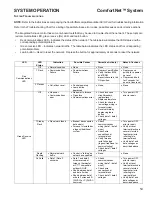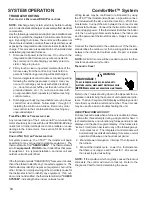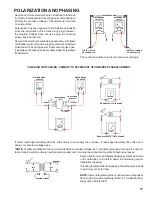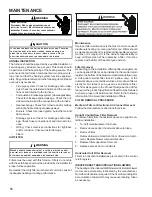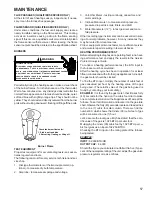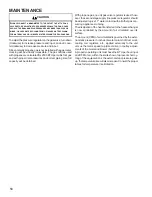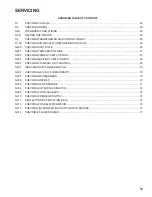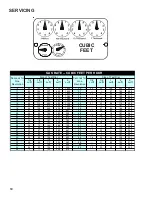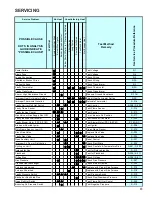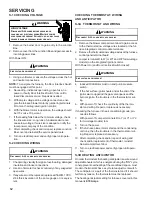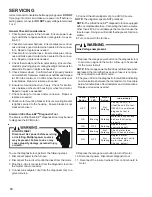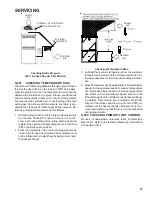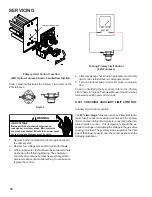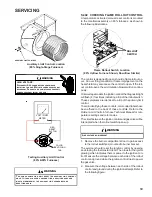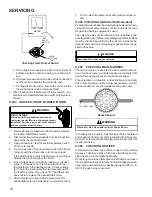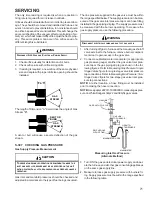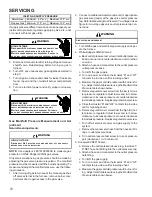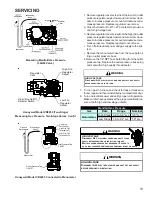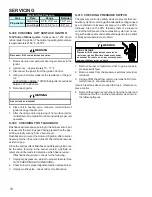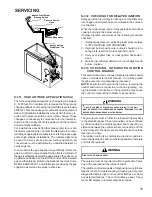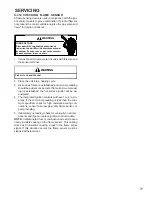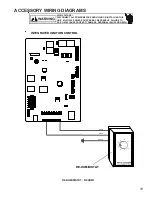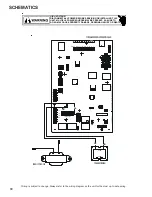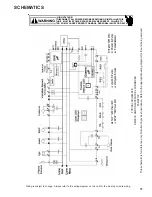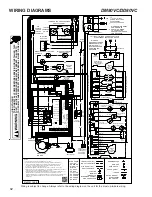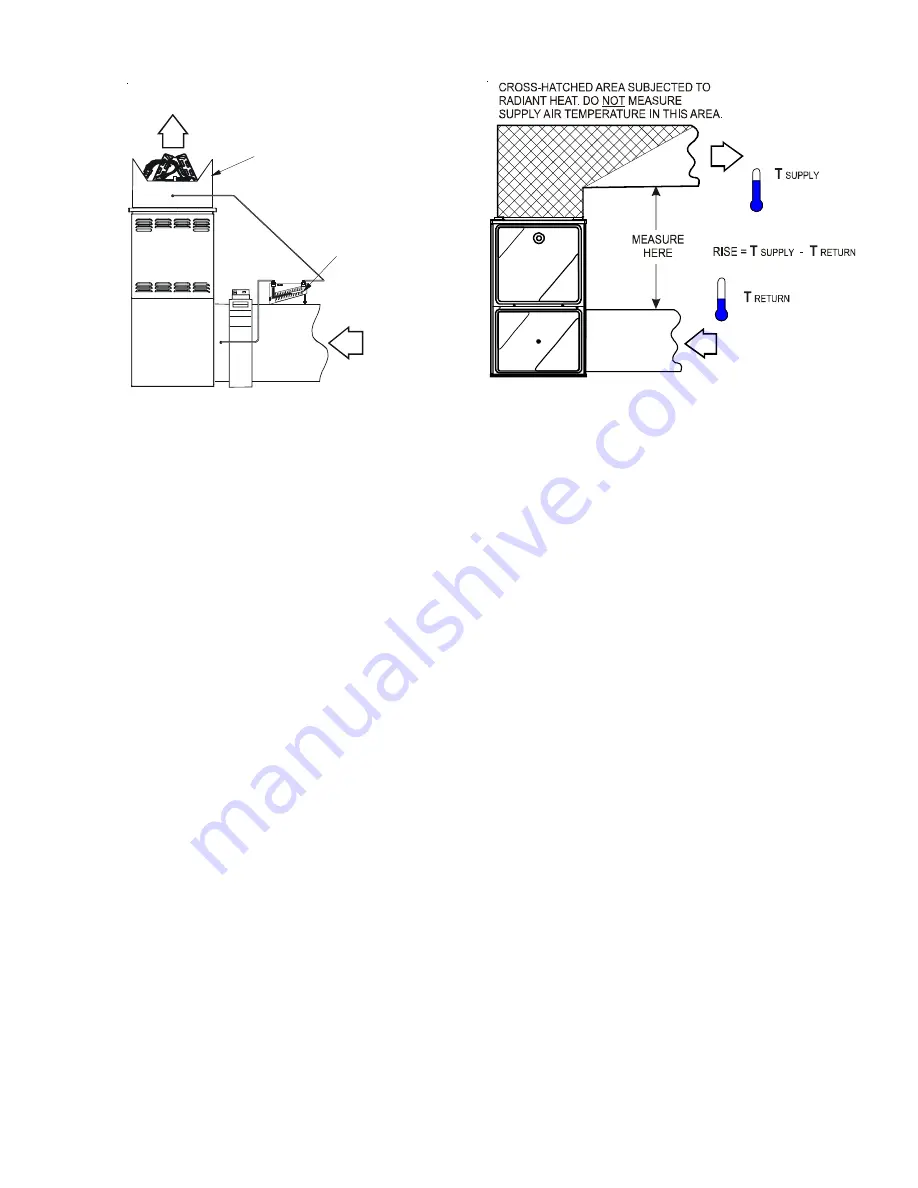
SERVICING
67
Amana
Ele c tr o nic Ai r Cle a n er
Ca ution
High Voltage
To a void per sonal in ju ry, wait 15
secon ds afte r de -ene rgizing u nit
b efore touch in g unit in terior .
CUTAWAY OF DUCTWORK
TO EXPOSE COIL
SUPPLY
AIR
INCLINED
MANOMETER
RETURN
AIR
Checking Static Pressure
(80% Furnace Shown, 90% Similar)
S-201 CHECKING TEMPERATURE RISE
The more air (CFM) being delivered through a given furnace,
the less the rise will be; so the less air (CFM) being deliv-
ered, the greater the rise. The temperature rise should be
adjusted in accordance to a given furnace specifications
and its external static pressure. An incorrect temperature
rise may result in condensing in or overheating of the heat
exchanger. An airflow and temperature rise table is pro-
vided in the blower performance specification section. De-
termine and adjust temperature rise as follows:
1. Operate furnace with burners firing for approximately
ten minutes. Check BTU input to furnace - do not ex-
ceed input rating stamped on rating plate. Ensure all
registers are open and all duct dampers are in their final
(fully or partially open) position.
2. Place thermometers in the return and supply ducts as
close to the furnace as possible. Thermometers must
not be influenced by radiant heat by being able to “see”
the heat exchanger.
SUPPLY
AIR
RETURN
AIR
Checking Temperature Rise
3. Subtract the return air temperature from the supply air
temperature to determine the air temperature rise. Al-
low adequate time for thermometer readings to stabi-
lize.
4. Adjust temperature rise by adjusting the circulator blower
speed. Increase blower speed to reduce temperature
rise. Decrease blower speed to increase temperature
rise. Refer to
Circulator Blower Speed
section in the
Product Design section of this manual for speed chang-
ing details. Temperature rise is related to the BTUH
output of the furnace and the amount of air (CFM) cir-
culated over the heat exchanger. Measure motor cur-
rent draw to determine that the motor is not overloaded
during adjustments.
S-300 CHECKING PRIMARY LIMIT CONTROL
All use a nonadjustable, automatic reset, bi-metal type
limit control. Refer to the following drawing for the location
of the primary limit.

